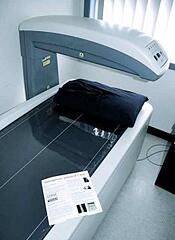Osteoporosis: a frightening lack of intervention


A minimal trauma fracture is defined as a fracture that occurs through falling, tripping or slipping from a standing height or a trauma of lesser impact.
Each such fracture is followed by repeat fracture in up to 50% of cases.
Unfortunately, many people who suffered such fractures, even when they presented to hospital, were not told that they could have osteoporosis nor were they investigated or treated for this disease.
The statistics are frightening:
- Someone was admitted to an Australian hospital with an osteoporotic fracture every 5-6 minutes in 2007
- People who suffer one fracture have a 2 to 3 times higher risk of suffering another fracture
- Studies have shown that only 20 to 30% of patients are being identified at the time they present with the first minimal trauma fracture!
Many task forces and medical groups are working hard to change this. Progress has been snail-paced.
A more appropriate response to an osteoporotic fracture would include:
- Assessment of medical history and risk factors
- Detection of the disease, using DXA testing
- Education
- Lifestyle change (such as giving up smoking, regular exercise, dietary measures)
- The risk of falls being assessed & reduced by helping the elderly walk more safely
- Supplementation with calcium and vitamin D when indicated
- Appropriate use of medications
This sort of fracture prevention clinic or fracture liaison service does not currently exist in the majority of Australian hospitals. Why not?
Bureaucracy, lack of health funding, lack of political will, and poor general awareness among the public and health professionals probably contribute.
Effective management of osteoporosis is a wonderful example of the need for the Connected Care model. At BJC Health, we have provided this fracture liaison service for years. Coordinated, conveniently-located, multi-disciplinary care to provide an effective solution.
All evidence-based guidelines highlight the importance in intervening to prevent the next fracture. When will our hospitals get their act together?
Dr Irwin Lim is a rheumatologist and a director of BJC Health. You should follow him on twitter here.Arthritis requires an integrated approach. We call this, Connected Care. Contact us.
